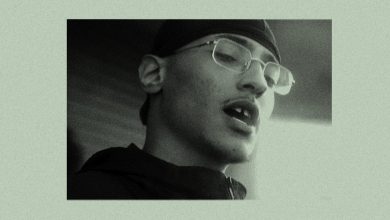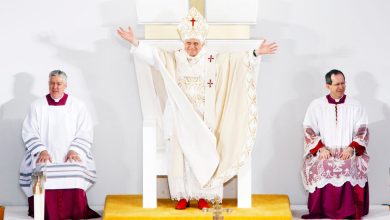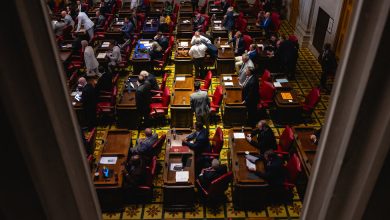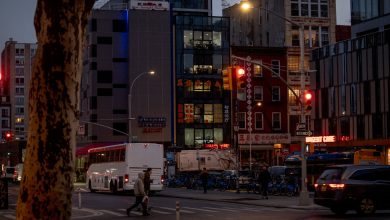Aline Kominsky-Crumb, Pioneering Comics Memoirist, Dies at 74
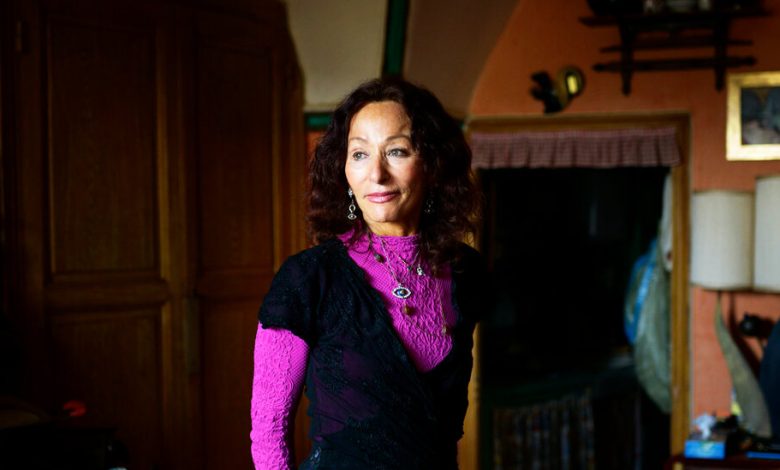
Aline Kominsky-Crumb, who in the early 1970s used a self-deprecating and sexualized confessional style to create what is believed to be the first autobiographical work by a woman in underground comics — and who continued to explore her life after her marriage to Robert Crumb, a giant of the genre — died on Wednesday at her home in the small French village of Sauve. She was 74.
Her family said the cause was pancreatic cancer.
In her raw, sometimes crudely drawn work, Ms. Kominsky-Crumb unabashedly described her abusive childhood, her cosmetic surgery and her hypochondria, as well as her sex life and her long open marriage to Mr. Crumb, with whom she occasionally collaborated. She called her magnified, zaftig alter ego The Bunch.
“I have stayed out of the mainstream my entire life,” she told Artforum earlier this year, “partially because the work itself determines that it’s not mainstream work. We started our comics off in the revolutionary underground. I was a painter with a degree in fine art, and I chose to do stuff that could be read on a toilet.”
In the male-dominated world of underground comics, Ms. Kominsky-Crumb established the tone for her idiosyncratic career as a member of a collective of female artists in San Francisco. Her first autobiographical story, “Goldie: A Neurotic Woman,” appeared in the inaugural issue of the collective’s Wimmen’s Comix, published in 1972. In the story, Goldie — the name comes from her original surname, Goldsmith — refers to herself as “a giant slug living in a fantasy of future happiness.”
Three years later, after leaving the Wimmen’s Comix collective with Diane Noomin (who also died this year) to create the one-shot comic Twisted Sisters, she drew one of her most vivid images. On the cover, Bunch sits on a toilet, looking jittery, her polka-dot underwear down at her ankles. She peers at a distorted fun-house image of herself in a hand mirror and thinks, “I look like a 50 yr. old businessman!” and “How many calories in a cheese enchilada?”
In “The Young Bunch,” an “unromantic, nonadventure story” in Twisted Sisters, she told of her first sexual experience, a date rape that occurred when she was a teenager. She graphically portrayed the nonconsensual encounter; Bunch’s opinion of the man’s penis (“looks like gizzards”); and the aftermath, when a tearful Bunch sits on the bed and asks him not to tell anyone, and he callously replies: “Hey, c’mon, doncha wanna burger? I’m hungry.”
Phoebe Gloeckner, who wrote and illustrated the 2002 graphic novel “The Diary of a Teenage Girl: An Account in Words and Pictures,” recalled finding underground comics hidden in her house by her parents when she was 11 or 12 and, at 15, memorizing the entire Twisted Sisters comic.
“Aline was telling the story of her adolescence, and I said, ‘This is what I want to do,’” Ms. Gloeckner said in a phone interview. “I started doing comics in my diary about my life. She just lit the bulb. She and Diane were my heroes.”
Roz Chast, one of The New Yorker’s most renowned cartoonists, said in an email that Ms. Kominsky-Crumb’s influence is visible in “every woman who creates her own cartoon voice.”
Aline Ricki Goldsmith was born on Aug. 1, 1948, in Long Beach, N.Y., on Long Island, and grew up mostly in the nearby wealthy hamlet of Woodmere. Her father, Arnold, was a businessman, and her mother, Annette (Rosenberg) Goldsmith, sold advertising for the Yellow Pages.
Ms. Kominsky-Crumb said that her parents had no patience for children, that her father made her feel ugly and that her upbringing was dysfunctional, a theme that she often explored in her comics. She lived with her grandparents, who she said treated her like a princess, for the first five years of her life.
“My family was really barbaric,” she told HuffPost in 2017. “My father was a wannabe criminal. If he could have been a ‘Goodfella,’ he would have. But he wasn’t Italian. He was Jewish. So he was a total loser.”
As a teenager, Aline found escape from her miserable home in the art galleries and museums of Manhattan and with the hippies in Greenwich Village. After graduating from high school in 1966, she attended the Cooper Union. After she married Carl Kominsky in 1968, she attended the University of Arizona, where she studied painting and graduated with a bachelor’s degree in 1971.
After divorcing Mr. Kominsky, she left for San Francisco that year with the goal of drawing comics. She found inspiration in Justin Green’s confessional epic “Binky Brown Meets the Holy Virgin Mary,” which was published that year.
Ms. Kominsky-Crumb and Ms. Noomin broke from the Wimmen’s Comix collective in 1975, she would later recall, amid bickering and power plays.
“There were two factions: militant feminists who wanted nothing to do with men and women who wanted to be strong and independent but sexy, too,” she told HuffPost. She chose the latter side and left with Ms. Noomin to create Twisted Sisters.
Ms. Kominsky-Crumb and Mr. Crumb began collaborating shortly after they met in 1971. They started a serial autobiography, published first in two issues of Dirty Laundry Comics, in 1974 and 1978, and later in various other publications over the years. The entire saga was anthologized in a book in 1993. She took the name “Bunch” from a character Mr. Crumb had created before they met who had an eerily similar surname, Honeybunch Kaminski. They wed in 1978 and had an open marriage.
In 1981 the Crumbs started a comics anthology, Weirdo, which Ms. Kominsky-Crumb later edited for several years. It ended publication in 1993, two years after the Crumbs moved to France, wearied by the wave of newcomers who were building McMansions in Winters, the Northern California town where they had been living. But they moved only at Ms. Kominsky-Crumb’s urging.
“Can you imagine a stronger test of fortitude than lifting someone as self-absorbed as Crumb by derrick and transplanting him from Northern California to a small village in France?” the cartoonist Art Spiegelman said by phone.
While Mr. Crumb was acclaimed for years, Ms. Kominsky-Crumb did not receive comparable praise until 2007, when her graphic memoir “Need More Love” was published and an exhibition of her work was held at the Adam Baumgold Gallery in Manhattan.
Reviewing that show in The New York Times, Roberta Smith wrote, “Her clenched, emphatic style echoes German Expressionist woodblock in its powerful contrasts of black and white, and her female faces — especially those of her thinly disguised surrogate, The Bunch, and her relatives — have a sometimes uncontainable fierceness.”
Hillary Chute, the author of “Graphic Women: Life Narrative and Contemporary Comics” (2010), said that the burst in Ms. Kominsky-Crumb’s renown after years of doing work that “no one was noticing” was attributable to the surging popularity of graphic memoirs and to “an intense interest from young people in different forms of feminism, not just about power and attaining perfection but the whole scope of being a woman.”
Ms. Kominsky-Crumb’s work was collected in “Love That Bunch,” originally published in 1990 and reissued in 2018.
In addition to her husband, Ms. Kominsky-Crumb is survived by their daughter, Sophie Crumb, who is also a comics artist, and three grandchildren.
“Crumb,” a documentary by Terry Zwigoff about Mr. Crumb and his family, was released in 1995. The Crumbs were unhappy with it — not because the film was inaccurate but because they couldn’t control it as they did their comics — and responded with a two-page collaborative comic in The New Yorker, where they were contributors.
In it, Mr. Crumb tells Ms. Kominsky-Crumb: “A lot of people said you came off looking like the most sane and sensible person in the film. How’s that make you feel?” To himself, he thinks, “Gotta keep her from flipping out about this film.”
Leaping in the air, her fists clenched, she says: “Actually, I feel like I was completely misrepresented being portrayed as the saintly stable wife. I don’t feel like that at all. It makes me want to behave like a wild animal!”
“Uh-oh,” Mr. Crumb says to her. “Wrong question.”


